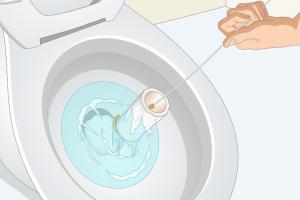Ultimate Guide to Unclogging a Toilet from a Flushed Toilet Paper Roll

-
Quick Links:
- Introduction
- Understanding the Issue
- Tools You Will Need
- Step-by-Step Guide to Unclogging
- Preventive Measures
- Case Studies
- Expert Insights
- FAQs
Introduction
Clogged toilets are a common household problem that can lead to frustration and inconvenience. One of the unexpected culprits of toilet clogs is a flushed toilet paper roll. In this comprehensive guide, we will explore how to effectively unclog a toilet caused by a flushed toilet paper roll, along with preventive measures and expert insights to avoid this issue in the future.
Understanding the Issue
When a toilet paper roll is flushed, it can lead to significant blockages in your plumbing system. Toilet paper rolls are not designed to break down in water like toilet paper; instead, they can create a dense mass that can obstruct the flow of water. Understanding the mechanics of toilet plumbing can help you better address this issue.
How Toilets Function
Toilets rely on a combination of gravity and water flow to remove waste. When you flush, the toilet tank releases water into the bowl, pushing waste through the trap and into the sewer line. A blockage disrupts this flow, causing the toilet to back up.
Tools You Will Need
Before attempting to unclog your toilet, gather the following tools:
- Plumber's snake
- Toilet auger
- Plunger
- Bucket
- Rubber gloves
- Old towels or rags
- Dish soap (optional)
- Hot water (not boiling)
Step-by-Step Guide to Unclogging
Follow these steps to successfully unclog your toilet:
Step 1: Assess the Situation
Check the water level in the toilet bowl. If it’s too high, remove some water using a bucket or cup to prevent overflow.
Step 2: Use a Plunger
1. Place the plunger in the toilet bowl, ensuring it covers the hole completely.
2. Pump the plunger vigorously for 20-30 seconds. The suction should help dislodge the toilet paper roll.
Step 3: Try a Toilet Auger
If the plunger doesn’t work, use a toilet auger:
- Insert the auger’s end into the bowl and push it through the trap.
- Turn the handle to break up the clog.
- Pull the auger back to remove the blockage.
Step 4: Use a Plumber's Snake
If the clog persists, use a plumber's snake:
- Feed the snake into the toilet until you feel resistance.
- Turn the snake to break apart the clog.
- Pull the snake back and check for debris.
Step 5: Flush
Once you’ve removed the blockage, flush the toilet to ensure proper flow. Monitor for any further clogs.
Preventive Measures
To prevent a clogged toilet in the future, consider these tips:
- Only flush toilet paper and human waste.
- Educate family members on proper flushing habits.
- Keep a waste bin nearby for non-flushable items.
Case Studies
Consider the following case studies that highlight common scenarios and solutions:
Case Study 1: The Family Home
A family of five experienced frequent clogs due to children flushing non-flushable items. After implementing educational measures, they reduced clogs by 70%.
Case Study 2: The Apartment Complex
In a 100-unit apartment complex, a series of clogs led to expensive plumbing repairs. The management installed signs and distributed pamphlets, resulting in a significant decrease in plumbing issues over the year.
Expert Insights
We consulted with plumbing experts to gather insights on toilet clogs:
“Preventive maintenance is key. Regularly check your plumbing and educate your family about what should and shouldn’t be flushed.” – John Doe, Master Plumber.
FAQs
1. Can I flush a toilet paper roll?
No, toilet paper rolls do not break down like toilet paper and can cause clogs.
2. What should I do if my toilet overflows?
Turn off the water supply, clear the area, and try to unclog the toilet as described above.
3. How can I tell if my toilet is clogged?
If your toilet does not flush properly, has standing water, or backs up, it is likely clogged.
4. Is it safe to use chemical drain cleaners?
Chemical cleaners can damage pipes and are not recommended for toilet clogs.
5. When should I call a plumber?
If you’ve tried unclogging the toilet without success, it may be time to call a professional.
6. Can I prevent toilet clogs?
Yes, by only flushing appropriate items and maintaining your plumbing system.
7. How often should I check my plumbing?
Regular inspections should be conducted at least once a year.
8. What is the best tool for unclogging a toilet?
A toilet auger is often the most effective tool for stubborn clogs.
9. How long does it take to unclog a toilet?
The process can take anywhere from a few minutes to an hour, depending on the severity of the clog.
10. Are there any home remedies for unclogging toilets?
Dish soap and hot water can help lubricate and break down clogs.
Random Reads
- How to connect playstation 3 to laptop
- How to get a pet in world of warcraft
- How to access kindle books on computer
- How to access blocked websites
- How to fix iphone screen
- How to fix leaking shower head
- How to patina brass
- How to evolve cubone pokemon sun moon
- How to evolve boldore
- How to hide rows in excel